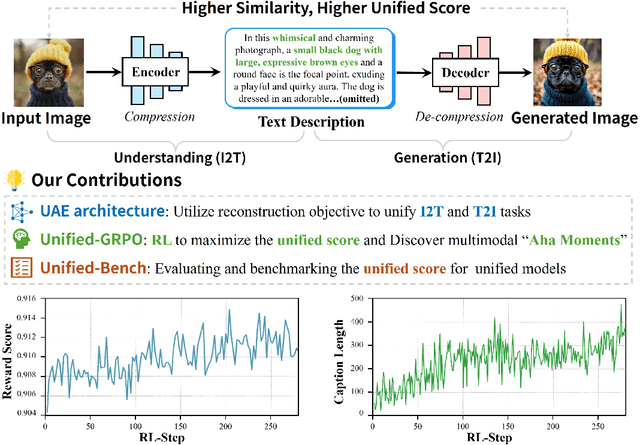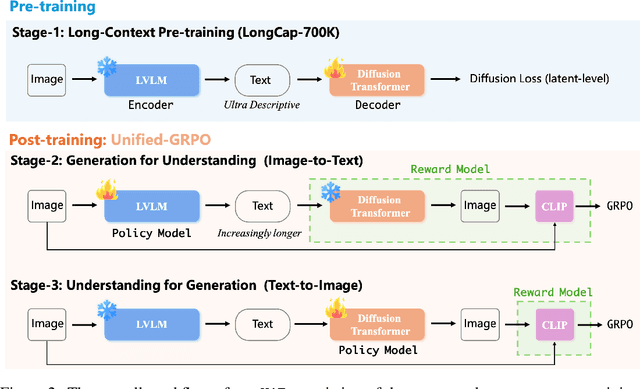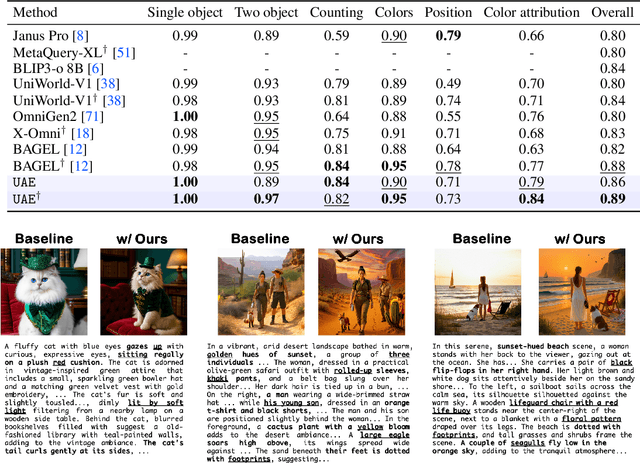Hao Liu
Tony
SAGS: Self-Adaptive Alias-Free Gaussian Splatting for Dynamic Surgical Endoscopic Reconstruction
Oct 31, 2025Abstract:Surgical reconstruction of dynamic tissues from endoscopic videos is a crucial technology in robot-assisted surgery. The development of Neural Radiance Fields (NeRFs) has greatly advanced deformable tissue reconstruction, achieving high-quality results from video and image sequences. However, reconstructing deformable endoscopic scenes remains challenging due to aliasing and artifacts caused by tissue movement, which can significantly degrade visualization quality. The introduction of 3D Gaussian Splatting (3DGS) has improved reconstruction efficiency by enabling a faster rendering pipeline. Nevertheless, existing 3DGS methods often prioritize rendering speed while neglecting these critical issues. To address these challenges, we propose SAGS, a self-adaptive alias-free Gaussian splatting framework. We introduce an attention-driven, dynamically weighted 4D deformation decoder, leveraging 3D smoothing filters and 2D Mip filters to mitigate artifacts in deformable tissue reconstruction and better capture the fine details of tissue movement. Experimental results on two public benchmarks, EndoNeRF and SCARED, demonstrate that our method achieves superior performance in all metrics of PSNR, SSIM, and LPIPS compared to the state of the art while also delivering better visualization quality.
GeoFM: Enhancing Geometric Reasoning of MLLMs via Synthetic Data Generation through Formal Language
Oct 31, 2025Abstract:Multi-modal Large Language Models (MLLMs) have gained significant attention in both academia and industry for their capabilities in handling multi-modal tasks. However, these models face challenges in mathematical geometric reasoning due to the scarcity of high-quality geometric data. To address this issue, synthetic geometric data has become an essential strategy. Current methods for generating synthetic geometric data involve rephrasing or expanding existing problems and utilizing predefined rules and templates to create geometric images and problems. However, these approaches often produce data that lacks diversity or is prone to noise. Additionally, the geometric images synthesized by existing methods tend to exhibit limited variation and deviate significantly from authentic geometric diagrams. To overcome these limitations, we propose GeoFM, a novel method for synthesizing geometric data. GeoFM uses formal languages to explore combinations of conditions within metric space, generating high-fidelity geometric problems that differ from the originals while ensuring correctness through a symbolic engine. Experimental results show that our synthetic data significantly outperforms existing methods. The model trained with our data surpass the proprietary GPT-4o model by 18.7\% on geometry problem-solving tasks in MathVista and by 16.5\% on GeoQA. Additionally, it exceeds the performance of a leading open-source model by 5.7\% on MathVista and by 2.7\% on GeoQA.
WeaveRec: An LLM-Based Cross-Domain Sequential Recommendation Framework with Model Merging
Oct 30, 2025Abstract:Cross-Domain Sequential Recommendation (CDSR) seeks to improve user preference modeling by transferring knowledge from multiple domains. Despite the progress made in CDSR, most existing methods rely on overlapping users or items to establish cross-domain correlations-a requirement that rarely holds in real-world settings. The advent of large language models (LLM) and model-merging techniques appears to overcome this limitation by unifying multi-domain data without explicit overlaps. Yet, our empirical study shows that naively training an LLM on combined domains-or simply merging several domain-specific LLMs-often degrades performance relative to a model trained solely on the target domain. To address these challenges, we first experimentally investigate the cause of suboptimal performance in LLM-based cross-domain recommendation and model merging. Building on these insights, we introduce WeaveRec, which cross-trains multiple LoRA modules with source and target domain data in a weaving fashion, and fuses them via model merging. WeaveRec can be extended to multi-source domain scenarios and notably does not introduce additional inference-time cost in terms of latency or memory. Furthermore, we provide a theoretical guarantee that WeaveRec can reduce the upper bound of the expected error in the target domain. Extensive experiments on single-source, multi-source, and cross-platform cross-domain recommendation scenarios validate that WeaveRec effectively mitigates performance degradation and consistently outperforms baseline approaches in real-world recommendation tasks.
An LLM-Powered Cooperative Framework for Large-Scale Multi-Vehicle Navigation
Oct 09, 2025



Abstract:The rise of Internet of Vehicles (IoV) technologies is transforming traffic management from isolated control to a collective, multi-vehicle process. At the heart of this shift is multi-vehicle dynamic navigation, which requires simultaneously routing large fleets under evolving traffic conditions. Existing path search algorithms and reinforcement learning methods struggle to scale to city-wide networks, often failing to capture the nonlinear, stochastic, and coupled dynamics of urban traffic. To address these challenges, we propose CityNav, a hierarchical, LLM-powered framework for large-scale multi-vehicle navigation. CityNav integrates a global traffic allocation agent, which coordinates strategic traffic flow distribution across regions, with local navigation agents that generate locally adaptive routes aligned with global directives. To enable effective cooperation, we introduce a cooperative reasoning optimization mechanism, in which agents are jointly trained with a dual-reward structure: individual rewards promote per-vehicle efficiency, while shared rewards encourage network-wide coordination and congestion reduction. Extensive experiments on four real-world road networks of varying scales (up to 1.6 million roads and 430,000 intersections) and traffic datasets demonstrate that CityNav consistently outperforms nine classical path search and RL-based baselines in city-scale travel efficiency and congestion mitigation. Our results highlight the potential of LLMs to enable scalable, adaptive, and cooperative city-wide traffic navigation, providing a foundation for intelligent, large-scale vehicle routing in complex urban environments. Our project is available at https://github.com/usail-hkust/CityNav.
A Spatial-Spectral-Frequency Interactive Network for Multimodal Remote Sensing Classification
Oct 06, 2025Abstract:Deep learning-based methods have achieved significant success in remote sensing Earth observation data analysis. Numerous feature fusion techniques address multimodal remote sensing image classification by integrating global and local features. However, these techniques often struggle to extract structural and detail features from heterogeneous and redundant multimodal images. With the goal of introducing frequency domain learning to model key and sparse detail features, this paper introduces the spatial-spectral-frequency interaction network (S$^2$Fin), which integrates pairwise fusion modules across the spatial, spectral, and frequency domains. Specifically, we propose a high-frequency sparse enhancement transformer that employs sparse spatial-spectral attention to optimize the parameters of the high-frequency filter. Subsequently, a two-level spatial-frequency fusion strategy is introduced, comprising an adaptive frequency channel module that fuses low-frequency structures with enhanced high-frequency details, and a high-frequency resonance mask that emphasizes sharp edges via phase similarity. In addition, a spatial-spectral attention fusion module further enhances feature extraction at intermediate layers of the network. Experiments on four benchmark multimodal datasets with limited labeled data demonstrate that S$^2$Fin performs superior classification, outperforming state-of-the-art methods. The code is available at https://github.com/HaoLiu-XDU/SSFin.
A PCA Based Model for Surface Reconstruction from Incomplete Point Clouds
Sep 19, 2025Abstract:Point cloud data represents a crucial category of information for mathematical modeling, and surface reconstruction from such data is an important task across various disciplines. However, during the scanning process, the collected point cloud data may fail to cover the entire surface due to factors such as high light-absorption rate and occlusions, resulting in incomplete datasets. Inferring surface structures in data-missing regions and successfully reconstructing the surface poses a challenge. In this paper, we present a Principal Component Analysis (PCA) based model for surface reconstruction from incomplete point cloud data. Initially, we employ PCA to estimate the normal information of the underlying surface from the available point cloud data. This estimated normal information serves as a regularizer in our model, guiding the reconstruction of the surface, particularly in areas with missing data. Additionally, we introduce an operator-splitting method to effectively solve the proposed model. Through systematic experimentation, we demonstrate that our model successfully infers surface structures in data-missing regions and well reconstructs the underlying surfaces, outperforming existing methodologies.
Can Understanding and Generation Truly Benefit Together -- or Just Coexist?
Sep 11, 2025



Abstract:In this paper, we introduce an insightful paradigm through the Auto-Encoder lens-understanding as the encoder (I2T) that compresses images into text, and generation as the decoder (T2I) that reconstructs images from that text. Using reconstruction fidelity as the unified training objective, we enforce the coherent bidirectional information flow between the understanding and generation processes, bringing mutual gains. To implement this, we propose UAE, a novel framework for unified multimodal learning. We begin by pre-training the decoder with large-scale long-context image captions to capture fine-grained semantic and complex spatial relationships. We then propose Unified-GRPO via reinforcement learning (RL), which covers three stages: (1) A cold-start phase to gently initialize both encoder and decoder with a semantic reconstruction loss; (2) Generation for Understanding, where the encoder is trained to generate informative captions that maximize the decoder's reconstruction quality, enhancing its visual understanding; (3) Understanding for Generation, where the decoder is refined to reconstruct from these captions, forcing it to leverage every detail and improving its long-context instruction following and generation fidelity. For evaluation, we introduce Unified-Bench, the first benchmark tailored to assess the degree of unification of the UMMs. A surprising "aha moment" arises within the multimodal learning domain: as RL progresses, the encoder autonomously produces more descriptive captions, while the decoder simultaneously demonstrates a profound ability to understand these intricate descriptions, resulting in reconstructions of striking fidelity.
Data-Driven Discovery and Formulation Refines the Quasi-Steady Model of Flapping-Wing Aerodynamics
Aug 26, 2025Abstract:Insects control unsteady aerodynamic forces on flapping wings to navigate complex environments. While understanding these forces is vital for biology, physics, and engineering, existing evaluation methods face trade-offs: high-fidelity simulations are computationally or experimentally expensive and lack explanatory power, whereas theoretical models based on quasi-steady assumptions offer insights but exhibit low accuracy. To overcome these limitations and thus enhance the accuracy of quasi-steady aerodynamic models, we applied a data-driven approach involving discovery and formulation of previously overlooked critical mechanisms. Through selection from 5,000 candidate kinematic functions, we identified mathematical expressions for three key additional mechanisms -- the effect of advance ratio, effect of spanwise kinematic velocity, and rotational Wagner effect -- which had been qualitatively recognized but were not formulated. Incorporating these mechanisms considerably reduced the prediction errors of the quasi-steady model using the computational fluid dynamics results as the ground truth, both in hawkmoth forward flight (at high Reynolds numbers) and fruit fly maneuvers (at low Reynolds numbers). The data-driven quasi-steady model enables rapid aerodynamic analysis, serving as a practical tool for understanding evolutionary adaptations in insect flight and developing bio-inspired flying robots.
Stationarity Exploration for Multivariate Time Series Forecasting
Aug 12, 2025Abstract:Deep learning-based time series forecasting has found widespread applications. Recently, converting time series data into the frequency domain for forecasting has become popular for accurately exploring periodic patterns. However, existing methods often cannot effectively explore stationary information from complex intertwined frequency components. In this paper, we propose a simple yet effective Amplitude-Phase Reconstruct Network (APRNet) that models the inter-relationships of amplitude and phase, which prevents the amplitude and phase from being constrained by different physical quantities, thereby decoupling the distinct characteristics of signals for capturing stationary information. Specifically, we represent the multivariate time series input across sequence and channel dimensions, highlighting the correlation between amplitude and phase at multiple interaction frequencies. We propose a novel Kolmogorov-Arnold-Network-based Local Correlation (KLC) module to adaptively fit local functions using univariate functions, enabling more flexible characterization of stationary features across different amplitudes and phases. This significantly enhances the model's capability to capture time-varying patterns. Extensive experiments demonstrate the superiority of our APRNet against the state-of-the-arts (SOTAs).
Stand-In: A Lightweight and Plug-and-Play Identity Control for Video Generation
Aug 12, 2025Abstract:Generating high-fidelity human videos that match user-specified identities is important yet challenging in the field of generative AI. Existing methods often rely on an excessive number of training parameters and lack compatibility with other AIGC tools. In this paper, we propose Stand-In, a lightweight and plug-and-play framework for identity preservation in video generation. Specifically, we introduce a conditional image branch into the pre-trained video generation model. Identity control is achieved through restricted self-attentions with conditional position mapping, and can be learned quickly with only 2000 pairs. Despite incorporating and training just $\sim$1% additional parameters, our framework achieves excellent results in video quality and identity preservation, outperforming other full-parameter training methods. Moreover, our framework can be seamlessly integrated for other tasks, such as subject-driven video generation, pose-referenced video generation, stylization, and face swapping.
 Add to Chrome
Add to Chrome Add to Firefox
Add to Firefox Add to Edge
Add to Edge